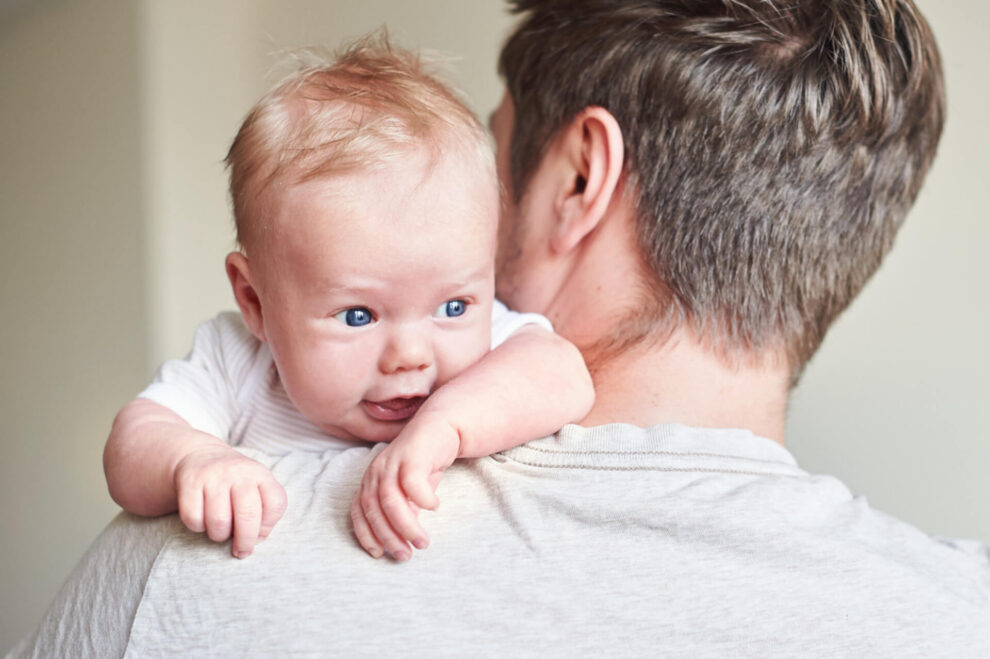Posted by: Kentucky Eye Institute in Vision Care

Vision problems are no joke. 6.8% of American children have a diagnosed eye or vision condition. Roughly 3% of American children are blind or visually impaired. Some eye conditions surface during a child’s adolescent or teenage years. But many eye conditions show signs when a child is an infant. You can spot signs of vision problems in babies and get help right away.
What are some common signs of problems? How exactly does eye development occur? What symptoms accompany vision impairment?
Answer these questions and you can care for your baby’s eyes through simple steps. Here is your quick guide.
Crossed Eyes
Most babies have misaligned eyes after birth. Their eyes need time to develop, and they need time to learn how to coordinate their eyes. Most cases of crossed eyes or misalignment resolve themselves within a few months.
If your baby still has crossed eyes after six months, you should go to an eye doctor. The eye muscles may need adjustment, or your baby may need help with tracking objects with both eyes.
You may notice your baby tilts its head to one side as it looks around. This may be its attempt to align both of its eyes. If you keep noticing your baby tilting its head, you should get help.
Inability to Track Objects
There is no timeline for eye development. Some babies develop the ability to track objects within a few months. Others require more time.
Within six months, your baby should have the ability to track moving objects. It should not turn or tilt its head to watch objects move. Its eyes should move without stopping or shifting.
A few conditions can cause the inability to follow moving things. Your baby may have misaligned eyes or a lazy eye. It may need to develop muscle strength so it can move its eyes with smooth gestures.
Closed Eyes
A baby may keep one eye closed most or all of the time. This is always the sign of a problem. The baby may have pain or bacteria in its closed eye, or it may have blurry vision in the eye.
A baby may try to correct the issue by rubbing its eyes. This may help the eye be less blurry for a moment. If your baby keeps one eye closed or keeps rubbing at one eye, you should schedule an appointment right away.
Crust
Everyone has a little crust in their eyes. Crust tends to be mucus, dead skin cells, and oils that the eyes produce while they move around.
But crust can be a sign of an infection. Pink eye creates some crust around the eyelids as well as excessive redness. Crust can create blurry vision and encourage a baby to rub its eyes.
If you notice some crust in your baby’s eyes, take a closer look. Try to see if there is any redness or puffiness in its eyes.
Pink eye and other infections are temporary problems. You may need to place some eye drops in your baby’s eyes and clean its eyes with hot water. Once the infection is gone, your baby’s sight will be back to normal.
Tearing
Besides crying, tears help with cleaning the eyes. It is okay if your baby’s eyes are a little moist, especially in the morning.
If your baby is shedding a lot of tears and it doesn’t seem upset, you should look at its eyes. Crust may be blocking the tear ducts, causing tears to leak out. It may have an infection like pink eye that is encouraging its body to produce tears for cleaning.
Tears may not impact your baby’s vision significantly. Your baby may be able to see things fine. But it may close or rub its eyes, making them unable to focus on things, which can be a long-term problem.
Light Sensitivity
Light sensitivity is common in infant vision. Many children find bright lights overwhelming, so they squint or look somewhere else.
Light sensitivity is a problem when a baby finds normal light repelling. It may keep its eyes closed while sitting in a sunny room. It may start to cry if a light turns on overhead.
Several eye conditions produce light sensitivity. Your baby’s eyes may be dry, making it hard to see at all. Your baby may have debris in the eyes like dust.
Discoloration
Your baby’s eyes may become red after it rubs them. The eyelids can become red during bacterial infections.
Yellow or white material can also develop inside the pupil. When you take a photograph of your baby, the material may become apparent.
A white spot in the eye may be an ulcer or one of the early signs of glaucoma. Yellow pus may come from a bacterial infection or a condition like jaundice.
Your baby’s eyes may seem misshaped and discolored. One pupil or eyeball may seem larger than the other.
Discoloration may not impact your baby’s sight. But it is indicative of a problem that could later jeopardize your child’s vision. You should ask a doctor about what they think.
The Most Common Signs of Vision Problems in Babies
There are many distinct signs of vision problems in babies. Crossed eyes and the inability to follow objects can seem troubling, though they can be parts of the eye development process.
Closed eyes, crust, and excessive tearing can be signs of bacterial infections. Once the infection is cured, your baby’s vision will be normal.
Light sensitivity and discoloration could be signs of glaucoma and other problems. You should take your baby to the doctor for them.
You don’t have to go far for great eye care. Kentucky Eye Institute serves Kentucky babies. Contact us today.
